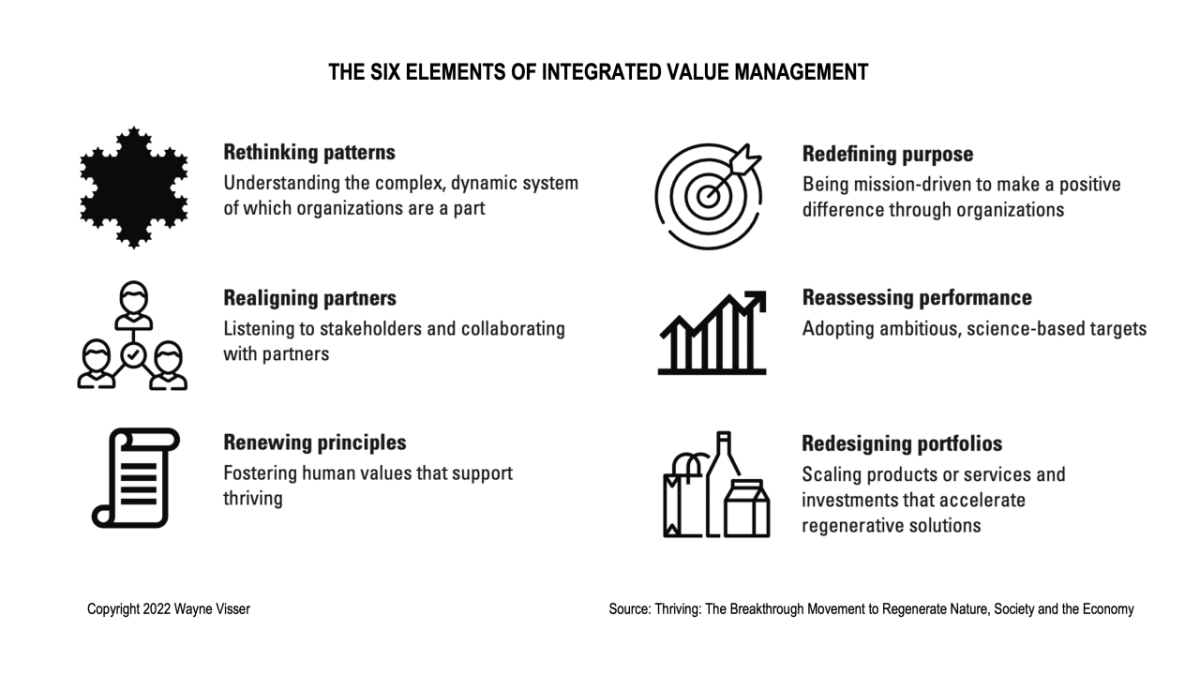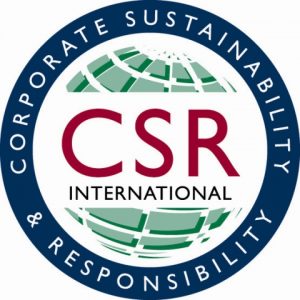Discover the Six Steps of Integrated Value Management
Thriving Series - Part 6, by Wayne Visser

Integration is not a novel idea. CSR and sustainable business thought leaders have been calling for integration of societal and environmental concerns for years, decades even. And many of the standards ask companies to integrate sustainability-related issues into their management systems, especially those from the International Organization for Standardization (ISO), like ISO 9001 (for quality), ISO 14001 (for environment), ISO 26000 (for social responsibility) and ISO 50001 (for energy). Academics have also been calling for various forms of integrated value as well, from stakeholder value (R. Edward Freeman) and blended value (Jed Emerson) to sustainable value (Stuart Hart and Mark Milstein) and shared value (Michael Porter and Mark Kramer).
The challenge, in other words, is not the what or the why of integration, it is the who and the how. In a previous article entitled “The six great transitions to regenerate nature, society and the economy” (and in chapters 3 to 8 of my book, Thriving), I apply integrated thinking to breakdowns in nature, society and the economy, and look at how they can be transformed into breakthroughs (the what and why). In this article, I will outline how organisations can integrate thriving into their organisations, a process which I call integrated value management (IVM). The six elements of IVM are summarised in the accompanying figure and explained briefly below.
Rethinking patterns requires the continuously mapping and tracking megatrends and socio-ecological changes that may affect the long-term performance of the organization, paying particular attention to the relationships between these forces and factors. The main goal here is to reach a deeper understanding of these patterns of relationships and trends. Some tools or approaches that can be used for this facet are scenarios and systems mapping, together with the six forces of degeneration, which should be seen as triggers for transformation.
Re-aligning partners means regularly surveying and capturing the most important concerns and expectations of key stakeholders, as well as entering into cross-sector partnerships to advance progress on those priority sustainability issues. The main goal is to listen to the perspectives of these interested and affected parties on the most significant areas of impact associated with the organization, and to prioritize issues that could benefit from partnerships and strategic action. Some tools or approaches that can be used for this facet are stakeholder prioritization and materiality assessment methods, which can be linked to the 17 Sustainable Development Goals and the 6 great transitions.
Renewing principles requires periodically checking what the organization’s emergent values are, and whether they are synergetic, meaning that they contribute to the healthy functioning of the collective (the team, the organization, the society, the ecosystem). The main goal of this facet is to allow the real values of the organization to emerge through a process of dialogue and then to reinforce the desired values as part of the culture. Some tools or approaches that can be used for this are values surveys or ethics barometers, as well as facilitated dialogues among employees and other stakeholders, linking to typical synergetic values. Ethics training or whistleblower procedures are another option.
Refining purpose entails reflecting on the strategic aspirations of the organization to ensure that they are aligned—in terms of focus and ambition—with whole-systems health, stakeholders’ needs, and synergetic values. The main goal of this facet is to check whether the organization’s purpose is clearly articulated as inspiring, ambitious strategic goals about the benefits the organization plans to deliver to society. Some tools or approaches that can be used for this facet are best-practice benchmarking (finding and comparing examples of excellent purpose statements) and strategy workshops.
Reassessing performance is about determining and transparently reporting appropriate, holistic metrics that give an accurate picture of the total impacts of the organization on society and the environment, using science- and norms-based approaches. The main goal of this action is to check whether the organization’s performance metrics are aligned with whole-systems integrity, as well as its stakeholder needs, synergetic values, and strategic purpose. Some tools or approaches that can be used for this facet are benchmarking reporting standards, footprinting and life-cycle analysis tools, externality valuation methods that measure the social and environmental costs of economic activities, and science-based targets.
Redesigning portfolios is about applying innovative design thinking to products, processes, and business models to deliver high-impact and scalable solutions to our socio-ecological challenges. The main goal of this is to reorient the focus of R&D efforts toward designing solutions with societal benefits and to strategically shift the portfolio of products and services toward being inherently regenerative. Some tools or approaches that can be used for this facet are exponential thinking and design thinking, linked to the six economic spheres (the ecoservices, circular, access, well-being, digital, and risk economies) and the six innovation pathways (symbiotic, sustainable, shared, satisfying, smart, and secure).
--
Dr Wayne Visser is a globally recognized Cambridge pracademic, poet, possibilitist and author of 41 books, including Thriving: The Breakthrough Movement to Regenerate Nature, Society, and the Economy (Fast Company Press, 2022). To find out more about his work and writing, visit www.waynevisser.com

